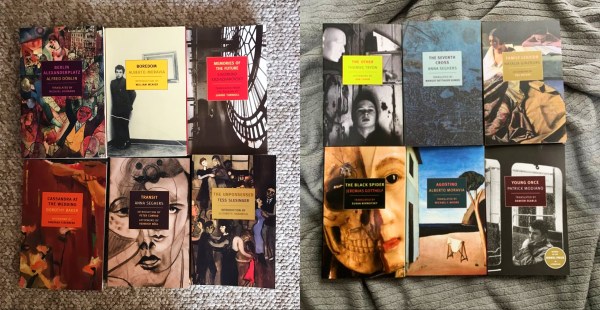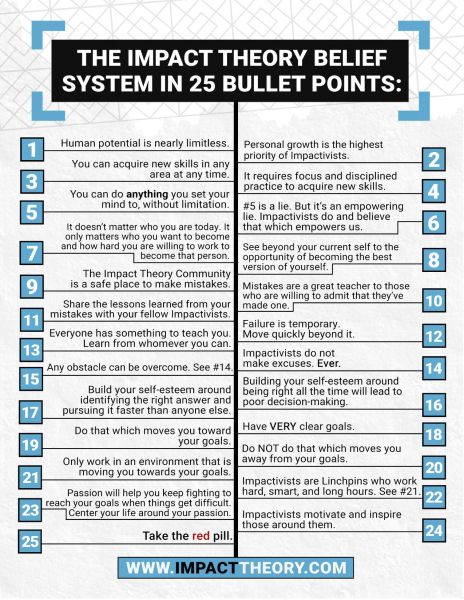
What is a brand? In the simplest sense, the identity (verbal and visual presentation) of an individual or organisation that sets it apart from others. In this article, I try to list a few characteristics of good brands, based not on textbooks but my own experience. I begin with these questions: Why do I keep going back to certain content platforms and people? Why are they even in my mind in a crowded, insanely competitive world? After closely examining the brands I am attracted to, I have come up with the following:
- Clear and Confident Story & Mission
Firstly, a good brand has a narrative that it can share with the world in a distilled form. In one or two sentences, we get what the entity is doing and why (we needn’t have the “how” all at once). The brand doesn’t waver from this core message, it can enhance it over time but it won’t change it arbitrarily. Canadian YouTuber Evan Carmichael, who runs a popular motivational channel for entrepreneurs, says it succinctly and passionately: “Solving the World’s Biggest Problem”, which, for him, is untapped human potential. I also think of Arianna Huffington’s new startup Thrive Global that states: “We’re helping the world’s leading enterprises end the stress and burnout epidemic. One Microstep at a time.”
2. Memorability
Next, a good brand has features that make it worth remembering. This could be its use of colour, structuring of content or particularity of design. The School of Greatness podcast by American entrepreneur Lewis Howes in which he interviews high achievers has caught my attention especially because of its energetic and positive orange. Personal development guru Tim Ferriss circulates a “5-Bullet Friday” email wherein he shares 5 things that he may be doing (watching, drinking, reading, celebrating, daydreaming, pondering, etc.). The categorisation makes his material easy to retain. In case of design, I think of New York Review Books that publishes literary authors from all over the world. Their covers are unusually artistic for the book world. Each has a block in the middle with the title. This graphic element makes the publisher instantly recognisable.

3. Quality & Consistency
Also, brands draw audiences when they produce quality content consistently. Both are important. If somebody posts 10 great images with great text on social media over two days and then disappears for three months, chances are they will be forgotten. On the other hand, if they post mediocre material every single day, chances are they will not make a big impact. Two projects that I think have mastered both quality and consistency in content creation across their channels are Humans of New York (photoblog celebrating stories of ordinary people) and The Criterion Collection (a gatherer and publisher of the greatest films from around the world).
4. Openness to Evolution
A good brand, though it has a fixed core message, can have a fluid profile. It can embrace change, grow and innovate, and by that, keep the audience from losing interest. For example, the Indian luxury wellness brand Paro Good Earth—rooted in the spiritual and philosophical traditions of the subcontinent—transforms its Instagram feed regularly so as not to appear stagnant and stale. During spring, it used contemporary photography and during monsoon, historical miniature paintings to get its ideas across. A public figure who has evolved and stayed relevant is Oprah Winfrey. Upon ending The Oprah Winfrey Show that brought her global fame, she moved to new projects, particularly prominent among which was Super Soul Sunday, where she continues to speak with important personalities.
5. Audience Participation & Community Building
Next, a good brand welcomes you, it asks you questions, allows you to express your opinions, it connects you with others, making you feel part of a community. Two examples I think of here are popular YouTubers Shallon Lester and Tom Bilyeu. Lester, who unpacks celebrity gossip to give enlightening and entertaining insights on human behaviour and condition, loves addressing her viewers as “Shalloners”, “Shallontourage” and “Shalligators”. Tom Bilyeu, who runs the talk show Impact Theory, aimed at personal development, calls his followers “Impactivists”. He also directly asks them to text him. Not every brand may use names for members of their community but engendering a sense of belonging is always a great idea.

6. Concrete Deliverables
If one is a doctor or real estate agent or lawyer or plumber, their product/service is obvious. But in certain industries, while the knowledge of the individual/organisation might be easy to perceive, their exact deliverable and revenue model might not be so easy to guess. A good brand will always make its offer and expertise direct and leave no room for confusion. I think of the global cultural communications agency Sutton that serves a variety of outfits in different ways. It mentions its Clients as: (1) Artists and Foundations, (2) Galleries, (3) Museums, (4) Architecture, (5) Collecting, (6) Design, Craftsmanship and Luxury, (7) Performing Arts and (8) Biennials and Triennials and its Services as: (1) Cultural Strategy, (2) Content Strategy and Media Relations, (3) Digital Advisory, (4) Marketing and Brand Strategy in very attractive presentations. I also like how the media platform Big Think operates Big Think Edge beyond its free content, introducing it right away on the homepage: “Big Think Edge helps individuals and organizations by catalyzing conversation around the topics most critical to 21st century success. Led by the world’s foremost experts, our dynamic learning programs are short-form, mobile, and immediately actionable.”
7. Something Unique
Lastly, brands make an impression if they truly have something unique to offer. I like the luxury lifestyle management business Quintessentially because it is very comprehensive, covering travel, art, education, food, wellness, at-home entertainment, everyday errands, and more for high net-worth clients. This type of concierge service is a recent industry and Quintessentially has established itself as a leader because of its 360-degree approach.
In people, an unrepeatable personality that immediately comes to mind is New York-based psychotherapist of Belgian-Jewish background Esther Perel. She is known for her concept of erotic intelligence. Her practice revolves around the management of the tension caused by the collision of two sets of human needs—one for security, familiarity, intimacy, safety, security and the other for mystery, adventure, space, distance, freedom. While there are countless relationship coaches and marriage counsellors around, what makes Perel stand out is her intellectual rigour coupled with deep knowledge of real-life situations. She beautifully merges the world of abstract ideas with that of everyday existence and articulates paradoxes in a manner that is very uncommon.
—
The seven principles above can be applied by anybody, regardless of industry. Painters, sculptors, photographers and others skilled in the arts in various capacities can take their projects to new professional heights if they follow these characteristics with seriousness and true commitment.
Written by Tulika Bahadur.

